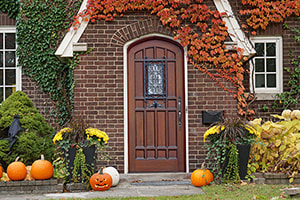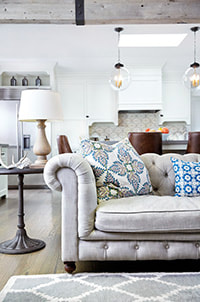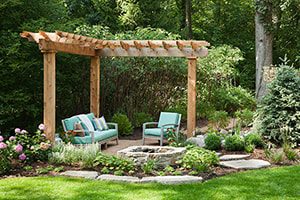 In the unlikely event that disaster strikes, you'll want to be prepared for the worst. After a burglary, house fire, or flood, it's hard to think clearly about next-step details like filing an insurance claim. Having a complete home inventory will relieve some stress by ensuring you're quickly reimbursed for stolen or damaged possessions. Here's how to make one: What Should You Include in Your Inventory?Include any possessions you would want to receive reimbursement for if they were destroyed or stolen, such as expensive furniture, jewelry, firearms, electronics, antiques, tools, and designer clothing. A thorough way to document items is to focus on completing one room before moving on to the next. Also, don't overlook storage places such as the basement or garage. Create an Extensive Record. When creating a record on paper or digitally, you'll need more than just a list of your possessions. Take pictures of each item, include descriptions of their condition, and save any original receipts or serial numbers. There are home inventory apps to help you organize your photos and pertinent information. Take Videos of Your Possessions. Taking a video walk-through of your possessions provides clear documentation without the need to list every cup and fork you own. Get close-ups of smaller items to ensure you have a clear image. Keep a running dialogue while you record to provide descriptions of each item's condition. You'll still want to save original serial numbers and receipts. Regularly Update Your Inventory and Keep It Secure. You should update your inventory when you receive expensive gifts, such as during the holidays or after your birthday. Make it a habit to record new furnishings, electronics, or appliances, and remove items on the list that you no longer own. After all your hard work, don't accidentally lose your home inventory. Make sure it's securely stored in a fireproof safe, safety deposit box, or digitally in the cloud.
0 Comments
 If you're preparing to sell your home, you might be wondering if you should make repairs or improvements before listing it. The answer depends on the overall condition of the property, the type of buyer you want to attract, and the current real estate market. If You Can't Afford Repairs, Sell As Is This applies to major issues like structural damage, plumbing complications, and electrical problems. Keep in mind that your buyer pool will most likely consist of flippers and contractors. While you might have to consider low offers, you won't have to deal with the hassle and expense of repairs. Most Buyers Want a Turnkey Home A move-in ready home comes with expectations based on factors such as the price and the neighborhood. For example, some people will expect upscale interior finishes and won't consider buying a house that doesn't have granite countertops or newer appliances. To get an idea of which improvements would be appropriate, look up houses in your area that are listed at your price point. What About Upgrades? When implementing upgrades, figure out the costs first and then compare them to what the property value might be after the upgrade. If you can't justify a return on the investment, it's worth rethinking the effort. Keep upgrades in line with what other homes have in the neighborhood. Fixer-Uppers Attract Buyers Who Want a Deal Many buyers say they don't mind fixer-uppers, but what they really mean is cosmetic repairs, such as replacing carpets, updating light fixtures, painting walls, or changing cabinet doors. They don't want to deal with moving walls, changing layouts, and doing other time-consuming projects. These types of buyers usually want to make a profit or don't qualify for costlier homes. They are likely to make offers below the asking price. Most homes need at least some minor repairs, such as patching holes and repainting walls. Anything that doesn't work right makes buyers wonder what bigger, invisible problems might be lurking. Since most buyers will use a home inspector, make sure that any potential code violations have been fixed as well. If you can't fix them yourself, hire someone. In a hot market, where properties are scarce, homes sell better with fewer fix-ups. Any home for sale that needs repairs will likely deliver lower prices, regardless of the market's environment. If you have questions about getting your home ready to sell, contact me today.  With existing-home sales continuing their upward trajectory, many economists believe that the housing market is well past the recovery phase. Lawrence Yun, the chief economist for the National Association of Realtors (NAR), believes the market is in a boom phase, with home sales comparable to pre-pandemic levels. "With the sizeable shift in remote work," he says, "current homeowners are looking for larger homes, and this will lead to a secondary level of demand even into 2021." Homes Sold in Record Time The increase in demand from buyers was evident in the amount of time properties remained on the market. The average property was available for sale for only 22 days in July, down from 24 days in June and 29 days a year ago. Of all the homes sold in July, 68% were available for less than a month. The short time from "for sale" to "sold" is evidence of the housing shortage that continues to plague the market. By the end of July, total housing inventory declined 2.6% from a month earlier and a staggering 21.1% from a year earlier. At the current sales pace, unsold inventory would supply the market for only 3.1 months, down from 3.9 months in June and 4.2 months in July 2019. According to Yun, this lack of inventory will impact sales. "The number of new listings is increasing, but they are quickly taken out of the market from heavy buyer competition. More homes need to be built." Property Prices Climb The lack of inventory is leading to an increase in home prices. In its latest data release for metro home prices, NAR recorded that in 2020's second quarter median single-family home prices increased in 96% of measured markets when compared to a year earlier. Median prices climbed 8.5% year over year. What's more, every sales region in the country recorded price gains. Home prices have seen year-over-year increases for the past 101 consecutive months; July's price increase marked the first time median home prices climbed above the $300,000 level. Regional Sales Breakdown for July 2020 Every sales region in the country reported double-digit, month-over-month increases. Only the Northeast saw a decline in year-over-year sales. Median home prices climbed in every region when compared to July 2019 data. Northeast: Existing-home sales annual rate of 640,000; an increase of 30.6% from June 2020, but a decrease of 5.9% from July 2019. The median sales price ($317,800) increased 4% from July 2019. Midwest: Existing-home sales annual rate of 1.39 million; an increase of 27.5% from June 2020 and 10.3% from July 2019. The median sales price ($244,500) increased 8% from July 2019. South: Existing-home sales annual rate of 2.59 million; an increase of 19.4% from June 2020 and 12.6% from July 2019. The median sales price ($268,500) increased 9.9% from July 2019. West: Existing-home annual rate of 1.24 million; an increase of 30.5% from June 2020 and 7.8% from July 2019. The median price ($453,800) increased 1.3% from July 2019.  Investing in some high-quality decorative pieces will add that atmosphere of polished flair to your home that everyone wants. Here are some splurge-worthy home decor ideas that make up for the extra expense with style points: Invest In a High-End Piece A single classy piece brings a room up a notch instantly—even if it costs as much as all the room furnishings and accessories combined. It's worth splurging on quality furniture, rugs, light fixtures, and artwork. Choose something that's meaningful to you and that you'll enjoy seeing every day for years to come. Add Gorgeous Lighting Updating a light fixture in a living room or dining room is the equivalent of updating the appliances in the kitchen. New light fixtures not only improve the appearance of a home but can also increase safety and energy efficiency. Consider whether it makes sense to install a single statement light fixture or layer multiple types of lighting. For example, pendant lighting and recessed lighting in a kitchen work beautifully. If you aren't sure how to start shopping for lighting, gather inspiration online and consult with a lighting specialist at a hardware or home improvement store. Go Big with an Area Rug You don't have to recarpet the entire room to provide a new look for your home. Laying down an 8-by-12 area rug with a modern or traditional pattern can alter the entire space. Similarly, smaller area rugs can be used as accents to your flooring by adding color and texture to wood floors or stone tile. Natural plant fibers like sisal and jute can give your rooms a more open, casual feel that is particularly pleasant for warm weather months and in a room that offers a good view of the outdoors.  The backyard isn't at the top of most homeowner's home-design plans, which may be a good thing. Because when it comes to designing outdoor living space, you'll want to have a well-developed decor style that fits your personality. Here are design elements that appeal to six different personalities: The Traditionalist: Classic Comfort What is the primary purpose of a patio? A place for sitting and relaxing. Attractive, sturdy pavers in appealing patterns provide easy walking and an artistic base for conversation nooks of tables, chairs, planters, and picnic tables. The Bohemian: Fire Pit Fire pits create a cozy outdoor atmosphere, especially as we move into late summer and early fall. Consider wood fires to keep mosquitoes at bay—everyone appreciates freedom from bugs! The Modernist: Multiple Levels Homeowners seeking a modern look can consider a range of options for walkways and pavers that might include steps and slopes to wind through a terraced garden. The Eclectic: Water Features They're not just for swimming. Homeowners can show off an eclectic backyard style with a fountain, fishpond, or other water feature that makes a splash. The Rustic: Outdoor Eating Bring cooking outside to a new level, with advanced outdoor kitchen units that allow guests to assist in meal preparation or simply chat with the host chef while enjoying the setting. The Industrial: Unique Lighting Want to make a statement and set a mood in an outdoor setting? Get creative with light by including hardscape lighting and illuminated planters, or short-term elements such as lighting fixtures that highlight cool metals and metallics for a more urban, industrial vibe. |
AuthorA variety of pertinent real estate topics and tips from various authors and contributors. Archives
December 2024
Categorieshow much home can i afford?*
|


